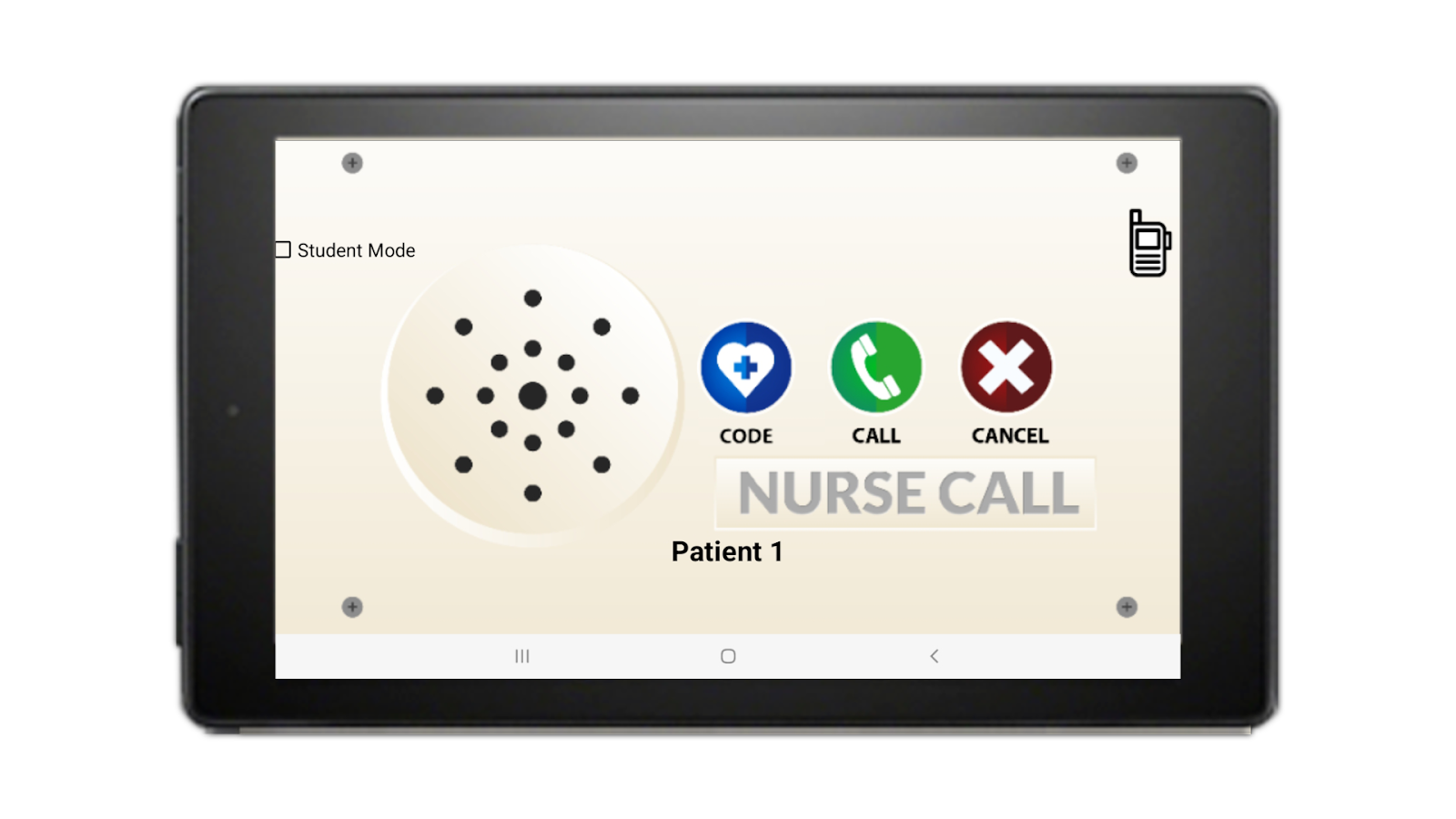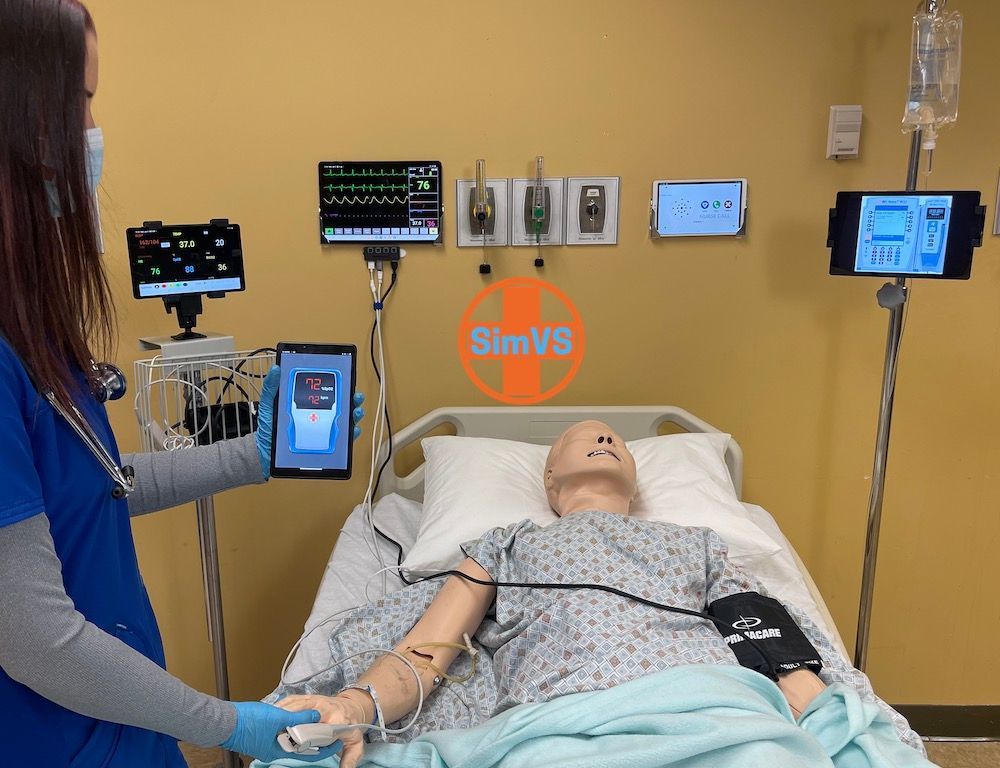Medication administration within healthcare simulation helps prepare learners worldwide for their roles in patient care better. To support simulation educators, SimVS develops simulation products to help healthcare education. Now, with the first IV pump simulator, SimVS opens up new opportunities for realism in medication administration training. This HealthySimulation.com article will explore medication administration, strategies to improve medication administration, and how SimVS can help enhance the training of healthcare professionals.
View the LEARN CE/CME Platform Webinar Universal Sim Lab Remote: Tablet-Based Simulated Medical Devices from SimVS to learn more!
Medication administration can be complex and requires great attention to detail. According to the National Library of Medicine, in 2023, there are close to 6,800 prescription medications available, along with numerous over-the-counter medications that healthcare providers must be knowledgeable about. Additionally, IV pumps are a primary medication delivery method and an essential tool that nurses must become proficient in. This poses the question – how do we improve our patient care and outcomes by decreasing medication errors? Clinical simulation can be the answer!
Healthcare professionals must practice both high-frequency and low-frequency skills in their daily work life to build clinical judgment and critical thinking. Simulation participants can practice in a safe environment and learn the consequences, and a protected environment and a sense of security enhance students’ self-esteem and confidence, thus promoting learning. In this way, the gap between theory and practice is substantially reduced.
SimVS has revolutionized how medical professionals and clinical learners train and practice skills with the widest range of virtual patient monitors, assessment devices, IV pumps, and defibrillators on the market today. These simulators allow learners to assess physiology, communicate as a team, and simulate the use of therapeutic devices such as a ventilator or IV pump.- truly a multipurpose platform. One of the SimVS platforms strengths is its ability to work in various clinical simulation environments, creating the most realistic learning environment possible. SimVS can be used with various manikins and also standardized patients. A notable advantage of SimVS is its utilization of tablets as the platform for all its programs. The flexibility, affordability, and portability are optimal to create the possibility of every bed to have a monitor or device.
Sample Medication Administration Scenario using SimVS
Below is a sample clinical experience to explore how to combine the SimVS Vital Signs monitor, IV pump, and the Nurse Call System to create a meaningful encounter. These separate devices are all controlled from one central instructor tablet which can interact with over 20 devices concurrently.
Audience: Learners would be the third or fourth-semester nursing students provide care to the cardiac stepdown patient in clinical simulations.
Objective: The objective of the simulation is to assess the patient and determine if changes or adjustments in medication(s) are required.
Setting: The setting is a hospital cardiac stepdown unit for a patient admitted for chest pain, and sinus tachycardia with a history of hypertension.
Equipment: The patient can be a manikin or a standardized patient. Incorporation of SimVS Products into the simulation scenario: bedside monitor for vital sign measurements, IV infusion pump, and nurse call system.
Patient History: Cardiac workup is initially negative for an acute myocardial infarction. On admission, the heart rate was 134 beats per minute, and BP was 164/94. The patient was given Esmolol 1000 mcg/kg/min bolus over 30 seconds and started on an infusion of 150 mcg/kg/min based on a weight of 100 kg. The patient was admitted to the cardiac stepdown unit. The objective of the simulation is to assess the patient and determine if changes or adjustments in medication(s) are required.
Call to action: At 0830, the patient used the nurse call system and stated, “I feel like my heart is beating too fast.”

Assessment: Findings are sinus tachycardia with PACs at 118 beats per minute with a BP of 158/90, Respiratory rate of 14/min, and O2 saturation of 96% on room air, as seen on the SimVS monitor. The patient denies chest pain.

Medications: The patient is on Esmolol (Brevibloc) infusing at 150 mcg/kg/minute infusion, as seen on the IV pump. The patient’s medications are aspirin 81 mg daily and lisinopril 10 mg daily, due at 0900. Standing orders are to increase the Esmolol by 50 mcg/kg/min for heart rate sustained above 100 beats per minute. There is also a PRN medication of Labetalol 5 mg IV Push for BP160/90.

Expected Interventions: The interventions required are physical assessment, vital signs, increase in Esmolol infusion by 50 mcg/kg/min, and notification of the healthcare provider of the changes in the patient’s condition and interventions. The nurse call system can be used to request additional nurses, charge nurse, or EKG machine.
Pathways: Performing all the expected interventions changes vitals to BP 158-86 and HR of 98. Patient no longer complains of chest pain. Failure to adjust meds will keep the patient at initial vitals.
Application of the SimVS Products to the Scenario
As shown in this example SimVS can increase the immersion and realism of the scenario and critical thinking skills of the learners. When the learner approaches the patient, SimVS offers realistic simulated physiological monitoring. The SimVS monitors include the hospital monitor, ventilator monitor, and defibrillator. The hospital monitor will provide the EKG rhythm and blood pressure reading in the scenario above. The monitor requires the learner to visualize the readings, interpret the data, and determine the best action plan. The learner would need to determine if medication is required. The monitor provides real-time feedback that can be changed on the fly or by the pre-programmed scenarios. This opportunity increases the ability for learners to think on their feet and learn the “what ifs” based on their actions and non-actions.
The IV Infusion Pump allows learners to administer medications or titrate an infusion to a patient. The learners can practice placing the pump on hold, making adjustments, restarting the pump, and other actions required. This experiential learning activity decreases the mystery of the machine by an increased interaction to improve self-confidence when working with IV infusions. The IV pump features four common interfaces for students to gain familiarity with.
Because of the realism of the SimVS offerings, the learner’s cognitive load can be decreased. Cognitive Load Theory (CLT) focuses on the relationship between working memory and long-term memory. Too much information at one time can actually hinder learning as barriers to the transfer of information from working memory to long-term memory. Instead of paper copies of EKGs and verbal instructions on the vital signs and IV infusion rate, SimVS products provide the learner with realistic current information that can be visualized without requesting the information again and completing the psychomotor tasks required for patient care. This decreases the extraneous information to improve the cognitive load.
More About SimVS Family of Products
The SimVS system also includes a wide library of pre-programmed scenarios for common conditions with scenarios with customized after-action reviews/checklists with specific details that can be incorporated into the debriefing session. A comprehensive checklist is provided for all pre-programmed scenarios. This allows the faculty member to make notes on the learner’s performance that can be incorporated into the debriefing. These checklists can be edited to allow for customization for faculty-created clinical scenarios. All checklists are shareable through several programs and are automatically graded for a debriefing session.
Medication administration is a core skill for all nurses, and the SimVS system allows practice in a safe environment to develop the proficiency and confidence needed by frontline personnel in this critical area. In this article, three of the SimVS offerings were explored. Many additional products are offered by SimVS, including a Vital Signs Cart, Smart Headwall systems with built-in monitors, and more.
More About SimVS
Today, SimVS is one of the world’s most successful providers of simulated medical device monitors, boasting thousands of unit installations on devices across the globe. The founders of SimVS recognized that existing healthcare simulation equipment was both expensive and cumbersome, so an effort was made to create more accessible alternatives that would enhance the clinical training experience. SimVS accomplished this by creating a product line of simulated patient virtual monitors, defibrillators, vital sign devices, call bells, ventilators, and more. SimVS has emerged as a trailblazer in the development of affordable simulated medical device technology to enhance the realism of the experiential learning environment.








